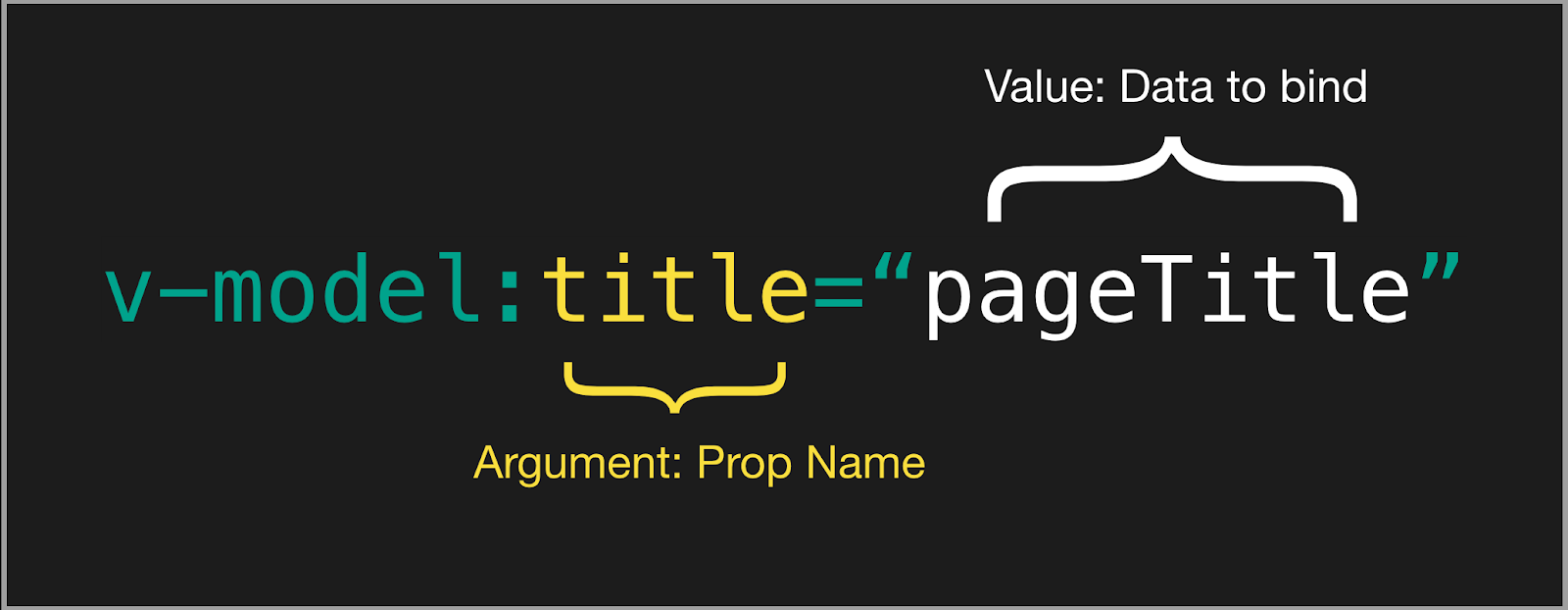Appearance
v-model 非兼容
概览
以下是对变化的总体概述:
- 非兼容:用于自定义组件时,
v-modelprop 和事件默认名称已更改:- prop:
value->modelValue; - 事件:
input->update:modelValue;
- prop:
- 非兼容:
v-bind的.sync修饰符和组件的model选项已移除,可在v-model上加一个参数代替; - 新增:现在可以在同一个组件上使用多个
v-model绑定; - 新增:现在可以自定义
v-model修饰符。
更多信息,请见下文。
介绍
在 Vue 2.0 发布后,开发者使用 v-model 指令时必须使用名为 value 的 prop。如果开发者出于不同的目的需要使用其他的 prop,他们就不得不使用 v-bind.sync。此外,由于v-model 和 value 之间的这种硬编码关系的原因,产生了如何处理原生元素和自定义元素的问题。
在 Vue 2.2 中,我们引入了 model 组件选项,允许组件自定义用于 v-model 的 prop 和事件。但是,这仍然只允许在组件上使用一个 v-model。
在 Vue 3 中,双向数据绑定的 API 已经标准化,以减少开发者在使用 v-model 指令时的混淆,并且更加灵活。
2.x 语法
在 2.x 中,在组件上使用 v-model 相当于绑定 value prop 并触发 input 事件:
html
<ChildComponent v-model="pageTitle" />
<!-- 是以下的简写: -->
<ChildComponent :value="pageTitle" @input="pageTitle = $event" />如果想要更改 prop 或事件名称,则需要在 ChildComponent 组件中添加 model 选项:
html
<!-- ParentComponent.vue -->
<ChildComponent v-model="pageTitle" />js
// ChildComponent.vue
export default {
model: {
prop: 'title',
event: 'change'
},
props: {
// 这将允许 `value` 属性用于其他用途
value: String,
// 使用 `title` 代替 `value` 作为 model 的 prop
title: {
type: String,
default: 'Default title'
}
}
}所以,在这个例子中 v-model 是以下的简写:
html
<ChildComponent :title="pageTitle" @change="pageTitle = $event" />使用 v-bind.sync
在某些情况下,我们可能需要对某一个 prop 进行“双向绑定”(除了前面用 v-model 绑定 prop 的情况)。为此,我们建议使用 update:myPropName 抛出事件。例如,对于在上一个示例中带有 title prop 的 ChildComponent,我们可以通过下面的方式将分配新 value 的意图传达给父级:
js
this.$emit('update:title', newValue)然后父组件可以在需要时监听该事件,并更新本地的 data property。例如:
html
<ChildComponent :title="pageTitle" @update:title="pageTitle = $event" />为了方便起见,我们可以使用 .sync 修饰符来缩写,如下所示:
html
<ChildComponent :title.sync="pageTitle" />3.x 语法
在 3.x 中,自定义组件上的 v-model 相当于传递了 modelValue prop 并接收抛出的 update:modelValue 事件:
html
<ChildComponent v-model="pageTitle" />
<!-- 是以下的简写: -->
<ChildComponent
:modelValue="pageTitle"
@update:modelValue="pageTitle = $event"
/>v-model 参数
若需要更改 model 的名称,现在我们可以为 v-model 传递一个参数,以作为组件内 model 选项的替代:
html
<ChildComponent v-model:title="pageTitle" />
<!-- 是以下的简写: -->
<ChildComponent :title="pageTitle" @update:title="pageTitle = $event" />
这也可以作为 .sync 修饰符的替代,而且允许我们在自定义组件上使用多个 v-model。
html
<ChildComponent v-model:title="pageTitle" v-model:content="pageContent" />
<!-- 是以下的简写: -->
<ChildComponent
:title="pageTitle"
@update:title="pageTitle = $event"
:content="pageContent"
@update:content="pageContent = $event"
/>v-model 修饰符
除了像 .trim 这样的 2.x 硬编码的 v-model 修饰符外,现在 3.x 还支持自定义修饰符:
html
<ChildComponent v-model.capitalize="pageTitle" />查阅关于组件上的自定义 v-model 修饰符的更多信息。
迁移策略
我们推荐:
检查你的代码库中所有使用
.sync的部分并将其替换为v-model:html<ChildComponent :title.sync="pageTitle" /> <!-- 替换为 --> <ChildComponent v-model:title="pageTitle" />对于所有不带参数的
v-model,请确保分别将 prop 和 event 命名更改为modelValue和update:modelValuehtml<ChildComponent v-model="pageTitle" />js// ChildComponent.vue export default { props: { modelValue: String // 以前是`value:String` }, emits: ['update:modelValue'], methods: { changePageTitle(title) { this.$emit('update:modelValue', title) // 以前是 `this.$emit('input', title)` } } }
COMPONENT_V_MODELCOMPILER_V_BIND_SYNC
下一步
更多新的 v-model 语法相关信息,请参考: